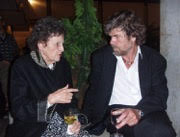Have you ever wondered if there was a better, quicker way to get your home clean? From the kitchen sink to the bathroom toilet, our homes require constant care and attention. Whether it’s just tidying up or a thorough deep-clean it can be quite overwhelming to tackle such an extensive cleaning project. But don’t worry! In this blog post, we are going to share some of our favorite unconventional tips for a tidy home that will make your job much easier and quicker without sacrificing any results. Don’t miss out on these great hacks – read on for more details!
Invest in a Bagless Vacuum Cleaner – Save time and effort by avoiding the need to empty the bag
Investing in a bagless vacuum cleaner can be a game changer for those who dread dealing with the hassle of constantly emptying the bag. Not only does it save time, but it also eliminates the need to constantly replace and purchase new bags. Bagless vacuum cleaners are outfitted with a dustbin that collects the dirt and debris as it sucks it up, allowing you to easily dispose of the contents. Additionally, bagless models often come with special filters that trap even the smallest particles, leaving your home more clean and free of dust. So if you’re tired of dealing with the hassle of changing and replacing the bag on your vacuum cleaner, consider investing in a bagless model for a more convenient and efficient cleaning experience.
Get Creative with Containers – Use food storage containers and drawers to store items like toys, books, and electronics
Organizing your home can be both functional and stylish when you get creative with containers. Instead of just utilizing food storage containers in the kitchen, consider using them throughout your house for additional storage. They can help keep toys, books, and electronics easily accessible but out of sight. Plus, you can easily label them for a more organized look. Using drawers with dividers is another excellent way to store smaller items such as knick-knacks or office supplies. With these organizing tips, you’ll be amazed at how much easier it is to find what you need, while also adding some charm to your living space.
Make a Cleaning Schedule – Prioritize weekly tasks to keep your home clean and organized
In today’s busy world, finding ample time to tidy up your home can be difficult. However, with a well-planned cleaning schedule that you can find at https://www.amazing-maids.com/ site, you can prioritize weekly tasks that will help keep your home clean and organized. Not only will this save you time in the long run, but it will also help reduce the stress and anxiety that often comes with a cluttered home. By dividing chores into manageable tasks throughout the week and assigning them to specific days, you can create a routine that works for you and your lifestyle. Remember, a little effort each day can go a long way in maintaining a happy and healthy living space.
Use Non-Toxic Products – Opt for natural cleaners that are safe for both you and the environment
When it comes to household cleaners, it can be all too easy to reach for the heavy-duty chemicals to get the job done. However, have you ever stopped to consider what harm those products may be causing to both your health and the environment? By opting for natural, non-toxic cleaners, you can have a spotless home without the negative consequences. Not only are these products better for your respiratory system and immune system, but they also contribute to sustainability efforts. So next time you run out of cleaner, consider making the switch to a safer alternative.
Create a “No Shoes” Rule – Encourage everyone in your family to take their shoes off at the door to avoid tracking dirt inside
Maintaining a clean home can sometimes feel like an uphill battle. Just when you think you’ve scrubbed every surface and cleaned every corner, someone comes trudging through the door with their shoes on, leaving muddy footprints in their wake. It’s enough to make any homeowner feel like giving up! That’s where a “no shoes” rule can come in handy. Encouraging your family to take their shoes off at the door can go a long way in keeping your floors clean and your home tidy. Not only will you reduce the amount of dirt and debris tracked indoors, but you’ll also create a more comfortable and welcoming environment for your loved ones to relax in. So go ahead and make that “no shoes” rule official – your floors will thank you!
Don’t Go Overboard – Keep it simple; buy only essential cleaning supplies and focus on what works best for your family
When it comes to cleaning supplies, less can sometimes be more. We’ve all been overwhelmed by the endless options at the store, but it’s important to not go overboard. Instead, focus on the essentials. Determine what works best for your family and stick with those items. Maybe it’s a trusty all-purpose cleaner or eco-friendly options that align with your values. By simplifying your cleaning supplies, not only will it save you money, but it’ll also make cleaning less of a daunting task. Take control of your cleaning supplies and focus on what truly works best for you and your family.
Even the most daunting chore of home cleaning can be simplified when you rely on strategies that are convenient and easy to follow. Invest in a bagless vacuum cleaner, get creative with containers, make a cleaning schedule, use non-toxic products wherever possible, create a “No Shoes” rule, and don’t go overboard – these are all great strategies for keeping your home sparkly clean with minimum effort. So what are you waiting for? Start sprucing up your abode by trying out these tips today!

 While preparing yet another Train-the-Trainer program today, I came across this beautiful image that represents, for me, the beauty and wonder of teaching how to teach. After my morning exercises and thirty minutes of Zen meditation, I was thinking of which three “questions” to ask of the ten trainers who will join me at Olympus Headquarters in Melbourne, Australia later this evening for our working dinner. Usually, I open this session with an icebreaker exercise focused on active listening, followed by three interactive group exercises where each group tackles a challenging question such as “what is competency?”
While preparing yet another Train-the-Trainer program today, I came across this beautiful image that represents, for me, the beauty and wonder of teaching how to teach. After my morning exercises and thirty minutes of Zen meditation, I was thinking of which three “questions” to ask of the ten trainers who will join me at Olympus Headquarters in Melbourne, Australia later this evening for our working dinner. Usually, I open this session with an icebreaker exercise focused on active listening, followed by three interactive group exercises where each group tackles a challenging question such as “what is competency?”